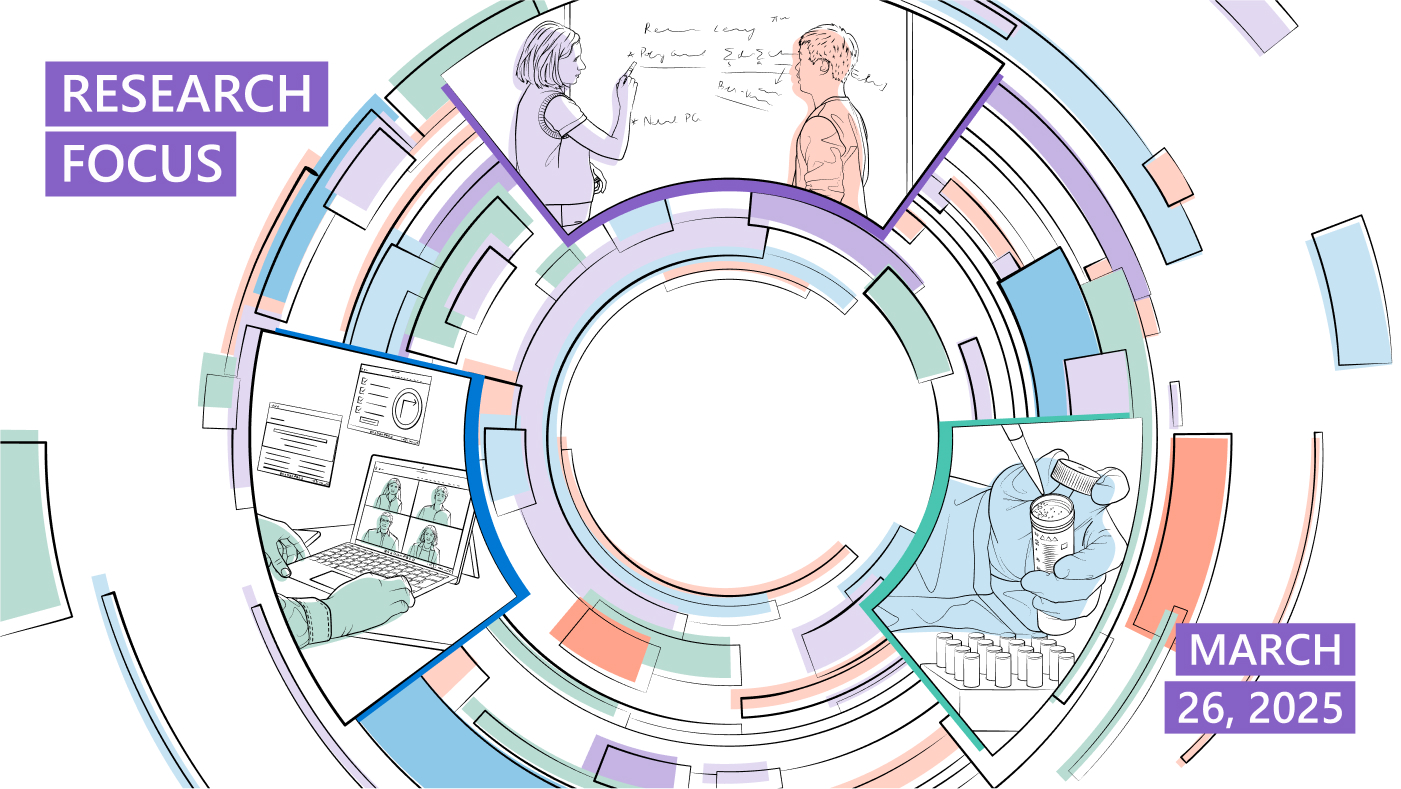
Welcome to Research Focus, a series of blog posts that highlights notable publications, events, code/datasets, new hires and other milestones from across the research community at Microsoft.
NEW RESEARCH
Hide and seek with Spectres
Attack methods like Spectre (opens in new tab) exploit speculative execution, one of the key performance optimizations of modern CPUs. Microsoft researchers are working on a novel testing tool (opens in new tab) that can automatically detect speculative leaks in commercial (back-box) CPUs. However, until now the testing process has been slow, which has hindered in-depth testing campaigns and the discovery of new classes of leakage.
In a new paper: Hide and Seek with Spectres: Efficient discovery of speculative information leaks with random testing, researchers from Microsoft and academic collaborators identify the root causes of the performance limitations in existing approaches—and propose techniques to overcome them. These techniques improve the testing speed over the state of the art by up to two orders of magnitude.
These improvements enabled the researchers to run a testing campaign of unprecedented depth on Intel and AMD CPUs. In the process, they discovered two types of previously unknown speculative leaks (affecting string comparison and division) that have escaped previous manual and automatic analyses.
The paper that describes the novel techniques will appear at IEEE Symposium on Security and Privacy (opens in new tab) 2023.
Microsoft research podcast
PODCAST
Microsoft Research’s Philipp Witte on improving carbon sequestration with AI
Reducing carbon dioxide in the atmosphere could play an important role in minimizing climate change. Carbon sequestration – the process of locking carbon dioxide in deep underground reservoirs – is a developing technology that could make a meaningful contribution if it were deployed at scale. Deep learning AI technologies can improve the models required to develop these reservoirs, which could help scale up sequestration projects to a meaningful level.
Philipp Witte, a researcher with Microsoft Research for Industry (opens in new tab), recently chatted with Fixing the Future (opens in new tab) from IEEE Spectrum about how AI can help improve carbon sequestration. For example, AI can facilitate computationally intensive simulations and manage complex modeling requirements more efficiently than conventional methods.
Tune in to the podcast (opens in new tab) for a lively discussion at the intersection of AI and decarbonization.
OPPORTUNITY
Microsoft Research Data Science Summer School – Apply now
Microsoft Research New York City’s Data Science Summer School (DS3) is an intensive hands-on introduction to data science for local undergraduate students interested in attending graduate school in computer science and related fields. The curriculum includes coursework in data science and group research projects. This year’s program runs from May 30 to June 23, and applications will be accepted through April 11.
The course is taught by leading scientists at Microsoft Research New York City and each participant will receive a laptop and $3,000 stipend. Sessions will cover tools and techniques for acquiring, cleaning, and utilizing real-world data for research purposes. The course also serves as an introduction to problems in applied statistics and machine learning, and will cover the theory behind simple but effective methods for supervised and unsupervised learning.
Applicants must be currently enrolled in an undergraduate program in the New York City area. We strongly encourage people from diverse, non-traditional, and under-represented backgrounds in STEM to apply.
Check out the program details (opens in new tab) and apply (opens in new tab) today.





